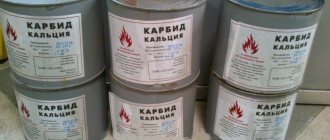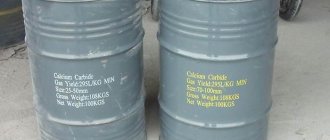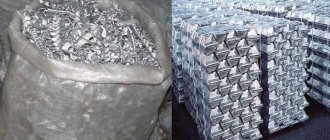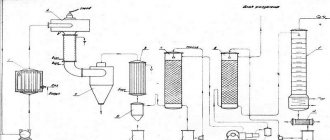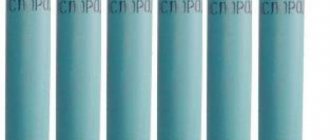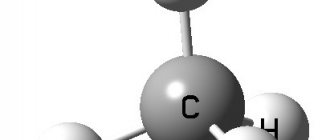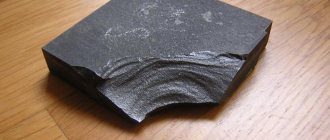Chemical compound
Calcium carbide
| Names | |
| Preferred IUPAC name Calcium acetylide | |
| IUPAC systematic name Calcium ethindiide | |
| Other names Calcium percarbide Calcium carbide Calcium dicarbide | |
| Identifiers | |
| Number of CAS |
|
| 3D model (JSmol) |
|
| ChemSpider |
|
| ECHA InfoCard | 100.000.772 |
| EU number |
|
| PubChem C.I.D. |
|
| UNII |
|
| CompTox Control Panel (EPA) |
|
InCHI
| |
Smiles
| |
| Characteristics | |
| Chemical formula | CaC2 |
| Molar mass | 64.099 g/mol |
| Appearance | From white powder to gray/black crystals |
| Density | 2.22 g/cm3 |
| Melting temperature | 2160 °C (3920 °F, 2430 K) |
| Boiling point | 2300 °C (4170 °F, 2570 K) |
| Solubility in water | Fast hydrolysis |
| Structure | |
| Crystal structure | Tetragonal [1] |
| Space group | D174h, I4/mmm, tI6 |
| Coordination geometry | 6 |
| Thermochemistry | |
| Standard molar entropy (S o298) | 70 J mol−1 K−1 |
| Std. Enthalpy of formation (Δl HOUR ⦵298) | −63 kJ mol−1 |
| Dangers | |
| Chief danger | Reacts with water to release acetylene gas[2] |
| GHS Pictograms | |
| GHS signal word | Danger |
| GHS Hazard Statements | H260 |
| NFPA 704 (fire diamond) | 4 1 2 W |
| Autoignition temperature | 305 °C (581 °F, 578 K) (acetylene) |
| Unless otherwise stated, data for materials are given at their standard state (at 25 °C [77 °F], 100 kPa). | |
| Y check (what is YN?) | |
| Links to infoboxes | |
Calcium carbide
, also known as
calcium acetylide
, is a chemical compound with the chemical formula of C2. Its main industrial use is the production of acetylene and calcium cyanamide.[3]
The pure material is colorless, but pieces of technical calcium carbide are gray or brown in color and consist of approximately 80–85% CaC2 (the rest is CaO (calcium oxide), Ca3n2 (calcium phosphide), CaS (calcium sulfide), Ca3N2 (calcium nitride), SiC (Silicon Carbide), etc.). In the presence of traces of moisture, commercial calcium carbide emits an unpleasant odor reminiscent of garlic.[4]
Applications of calcium carbide include the production of acetylene gas, and also for the production of acetylene in carbide lamps; production of chemicals for fertilizers; and in steelmaking.
Physical properties
- Colorless tetragonal crystals.
- Density: 228 (+20 °C, g/cm3).
- Specific heat capacity at constant pressure (in J/g·K): 0.92 (+20–325 °C).
- Standard enthalpy of formation ΔfH (298 K, kJ/mol): −62.8 (t).
- Standard Gibbs energy of formation ΔfG (298 K, kJ/mol): −67.8 (t).
- Standard entropy of formation S (298 K, J/mol·K): 70.3 (t).
- Standard molar heat capacity Cp (298 K, J/mol·K): 62.34 (t).
- Melting enthalpy ΔHmelt (kJ/mol): 32.2.
- Calcium carbide has a strong garlicky odor.
Recommendations
- Massalimov, I. A.; Kireeva, M. S.; Sangalov, Yu. A. (2002). "Structure and properties of mechanically activated barium peroxide". Inorganic materials
.
38
(4): 363. doi:10.1023/A: 1015105922260. S2CID 91881752. - NFPA Hazard Rating Information for Common Chemicals. Northeastern University
- Patnaik, Pradyat (2003). Handbook of Inorganic Chemical Compounds
. McGraw-Hill. ISBN 0-07-049439-8. - Vincoli, Geoffrey Wayne (25 November 1996). Risk Management for Hazardous Chemicals
. CRC Press. p. 429. ISBN 978-1-56670-200-3. - ^ a b c d
Greenwood, Norman N.;
Earnshaw, Alan (1997). Chemistry of elements
(2nd ed.). Butterworth-Heinemann. p. 298. ISBN 978-0-08-037941-8. - Calculated from data in the CRC Handbook of Chemistry and Physics
. - ^ a b
Calcium Carbide, Bernhard Langhammer, Ullmann's Encyclopedia of Industrial Chemistry, Wiley Interscience. (Subscription required) - Freeman, Horace (1919). "Production of cyanamide." Chemical News and Journal of Physical Sciences
.
117
:232. - Morehead, J. T. & de Chalmotte, G. (1896). "Production of calcium carbide." Journal of the American Chemical Society
.
18
(4): 311–331. Doi:10.1021/ja02090a001.CS1 maint: several names: list of authors (link) - Moissan, H. (1892). "Chimie Minérale - Description d'un nouveau four électrique." Comptes rendus hebdomadaires des séances de l'Académie des Sciences
.
115
:1031. - Renouf, Edward (1899). "Use of Acetylene". Monthly Popular Science Magazine
: 335–347. - “Zgrada Prve hidrocentrale na Balkanu - Komisija za očuvanje nacionalnih spomenika.” old.kons.gov.ba
(in Serbo-Croatian). CONS. Retrieved March 15, 2022. - ^ a b
Greenwood, Norman N.;
Earnshaw, Alan (1997). Chemistry of elements
(2nd ed.). Butterworth-Heinemann. ISBN 978-0-08-037941-8. - Dong, I (01/23/2006). "Troubles in the PVC industry." Hong Kong Trade Development Council. Archived December 28, 2007.CS1 maint: BOT: Source URL status unknown (link)
- “The government is taking action to curb the development of calcium carbide.” China Daily via BusyTrade.com. 2007-05-16. Archived February 11, 2007.CS1 maint: BOT: Source URL status unknown (link)
- Lacson, Jamie; Schlag, Stefan; Toki, Goro (December 2004). "Calcium carbide". Research Institute Consulting.
- "Speleological Equipment and Culture (from Te Ara New Zealand Encyclopedia)".
- Clemmer, Gregg (1987). American Miners' Carbide Lamps: A Collectors' Guide to American Carbide Mine Lighting
. Westernlore Publications. - Abeles, F. B., & Gahagan, H. E. III (1968). "Uptake: the role of ethylene, ethylene analogues, carbon dioxide and oxygen". Plant Physiol. 43
(8):1255–1258. Doi:10.1104 / p.43.8.1255. PMC 1087003. PMID 16656908.CS1 maint: several names: list of authors (contact) - “Bet on it. Your mango is ripened using carbide.” DNA
. 2013-05-18. Received 2018-08-25. - “Eating artificially ripened fruits is harmful.”
- "Carbidschieten wordt feest" (in Dutch). Algemin Dagblad. 2016-12-24.
- Singh, Randhir. "Determination of water content in soil - calcium carbide method." Civil Engineering Portal
. Retrieved September 7, 2022. - ASTM International. "ASTM D4944-18, Standard Test Method for Determining Water (Moisture) Content of Soil Under Field Conditions Using a Calcium Carbide Gas Pressure Meter." ASTM International. Retrieved September 7, 2022.
Appearance and characteristics of technical calcium carbide
Calcium carbide is produced by fusing coke and quicklime in electric furnaces. Molten calcium carbide is released from the furnace into special forms - molds, in which it hardens. The solidified calcium carbide is crushed and sorted into pieces of certain sizes.
Technical calcium carbide is a solid crystalline substance. In appearance, calcium carbide is a dark gray or brown solid. It produces a gray crystalline fracture with varying shades depending on purity. Calcium carbide greedily absorbs water. When interacting with water, even in the cold, calcium carbide decomposes with the rapid release of acetylene and a large amount of heat. The decomposition of calcium carbide also occurs under the influence of atmospheric moisture.
According to GOST 1460-56, the following dimensions (granulation) of calcium carbide pieces are established: 2×8; 8x15; 15×25; 25x80. Technical calcium carbide contains up to 80% of chemically pure calcium carbide, the rest is made up of impurities - quicklime, carbon, silicic acid and more.
Production
Calcium carbide is industrially produced in an electric arc furnace from a mixture of lime and coke at approximately 2200 °C (3990 °F).[5] This endothermic reaction requires 110 kilocalories (460 kJ) per mole[6] and high temperatures to remove carbon monoxide. This method has not changed since its invention in 1892:
CaO + 3 C → CaC2 + CO
The high temperature required for this reaction is practically unattainable with traditional combustion, so the reaction is carried out in an electric arc furnace with graphite electrodes. The resulting carbide product typically contains about 80% calcium carbide by weight. The carbide is crushed, forming small lumps ranging in size from a few to 50 mm. Impurities are concentrated in smaller fractions. CK2 Product content is determined by measuring the amount of acetylene formed during hydrolysis. For example, British and German standards for larger fractions are 295 L/kg and 300 L/kg respectively (at 101 kPa pressure and 20 °C (68 °F)). Impurities present in carbide include phosphide, which produces phosphine upon hydrolysis.[7]
This reaction was an important part of the Industrial Revolution in chemistry, and it was made possible in the United States as a result of the huge amount of low-cost hydroelectric power produced at Niagara Falls before the turn of the 20th century.[8]
The electric arc furnace production method was discovered in 1892 by T. L. Wilson and independently by H. Moissan in the same year.[9][10][11] In Bosnia and Herzegovina, the city of Jajce, the Austrian industrialist, Dr. Josef Kranz and his “Bosnische-Elektrizitäts AG”
the company, which was later succeeded by
Elektro-Bosna
, opened the largest chemical plant in Europe for the production of calcium carbide in 1899. Hydroelectric power station on Pliva to supply the plant with electricity was built along the river with an installed capacity of 8 MW. It was the first power station of its kind in South-Eastern Europe and was commissioned on 24 March 1899.[12]
Precautionary measures
CaC2 is an unstable compound that is prone to explosion. The fact is that calcium can even react with air, and as a result of the reaction, volatile gases are formed. The slightest spark can cause an instant fire, releasing a huge amount of heat and methane, which will lead to dire consequences. Therefore, it is necessary to transport the substance in sealed containers.
Fans of life hacks and “edgy experiments” with carbide should take care of their own safety. When working with the substance, you should wear special gloves; if you take the carbide with your bare hands, it will be impossible to wash them. The reaction with water causes not only the release of methane and heat, so the skin will burn.
Carbide - fun for children of the 90s
In the 90s there were no computer gadgets or the Internet yet, the kids had fun as best they could. Some shot birds with slingshots, others made smoke bombs. But the most dangerous thing was playing with carbide. There were many options: they threw it into a fire, it burns well when wet, they threw it into water and watched it bubble, they made bombs from plastic bottles.
Carbide was easy to obtain; gas welders threw it away right at the welding site. The boys, seizing the moment, picked up as much as they could carry and ran away from this place. The most interesting activity was exploding plastic bottles with carbide. They put carbide in a bottle, filled it with water, shook it and moved away. They occupied an observation position and waited for the explosion. The carbide fumes inflated the plastic until the bottle burst. It always happened suddenly, which added to the fun. There was such a case: the guys were sitting, as usual, exploding plastic bottles, and one they came across was very strong and did not want to explode. She was swollen and that's it. Tired of waiting for an explosion, we decided to do something else, for example, throw carbide into the fire. They were sitting, watching the burning of the reagent, and suddenly it occurred to someone to throw that same bottle that never exploded into the fire. They took her with them and carried her almost all day. Here comes the realization that the explosion will not be weak, but with fire. They only managed to run a couple of steps when a deafening explosion followed, the guys felt a blow to the back from the blast wave, and fell to the ground. All the residents of the yard ran out into the street to see what had exploded. By that time, the guys had rushed away from the scene at breakneck speed. They had never run so fast before. In addition to the bomb, they made a cannon from a beer can. They took an empty jar, cut off the top, and made a small hole in the side, closer to the bottom. A piece of carbide was placed inside and slightly wetted. They plugged the holes and shook them a little. Then they opened the top, and brought a burning match to the small hole, which produced a loud shot of accumulated gases. The fun was very dangerous, and there were quite a few casualties. They received severe burns to their hands and face. The scars remained for life. It’s still good if he escaped with scars, because he could have burned out his eyes and remained blind for life. There were such cases too. This is how the kids of the dashing 90s had fun. Today's youth are far from such fun. On the one hand, it’s good that they don’t risk their health.
You may also be interested: “Rubik’s Snake” - a puzzle from the 90s
In reducing CO2 emissions
The residues obtained from the production of acetylene from CaC2 (also called "calcium carbide residue" or "calcium carbide residues") are used to produce clinker or concrete.
Calcium carbide mud has a high content of calcium hydroxide (Ca(OH)2) (about 90%), some calcium carbonate (CaCO3) and has a pH greater than 12.
For these reasons, it can react with SiO.2 or Al2OR3 to form a product similar to that obtained during cement hydration.
One of the human activities that produces the most CO2 emissions is the construction industry. Cooperation2 it is formed in the east to separate from calcium carbonate during the reaction to form concrete.
Using calcium carbide sludge to replace calcium carbonate (CaCO3) has been found to reduce CO2 emissions by 39%.
Safety precautions and storage
Calcium carbide belongs to hazard class 1 based on the degree of impact on the body. Its dust irritates the skin, mucous membranes and respiratory tract. The reagent is very dangerous if inhaled (symptoms: intermittent breathing, cough, runny nose, feeling of suffocation, pulmonary edema), contact with the skin (burns, ulcers) and in the eyes (soreness, lacrimation, swelling of the eyelids).
When using the material, it is necessary to use special protective clothing, a gas mask, gloves and special shoes. Work only in well-ventilated areas. In case of contact with skin, rinse the affected area with plenty of water, lubricate with a rich cream and call a doctor.
Store in sealed containers in a vertical position (no more than 3 rows) in fireproof, well-ventilated warehouses or in open areas under a canopy, protecting from moisture. Shared storage with other substances is not allowed. Shelf life – 6 months from the date of production.
Discontinued use
TsK2 it was used in so-called carbide lamps. They work by dripping water onto calcium carbide to form acetylene, which ignites and thus produces light.
These lamps were used in coal mines, but their use was discontinued due to the presence of CH4 methane in those mines. This gas is highly flammable and the flame of a carbide lamp may ignite or explode.
They were widely used in slate, copper and tin mines, and in early cars, motorcycles and bicycles as headlights or headlights.
Currently, they are being replaced by electric lamps or even LED lamps. However, they are still used in countries such as Bolivia, in the Potosi silver mines.
